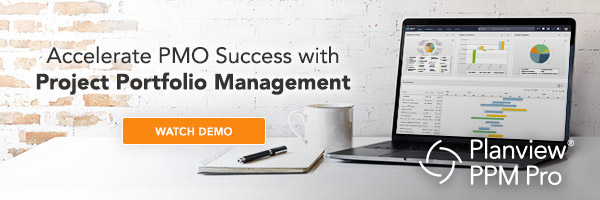
The following content is taken from the whitepaper, “Portfolio-Driven Performance: The 7 Process Areas That Drive IT and Business Results,” written by Jerry Manas. To make it more easily accessible to you, we are giving it everlasting life here on the blog.
For part three of this blog series, we’re going to analyze how that portfolio-driven approach allows for improved management of demand and capacity, along with projects and resources. Before we get started, be sure and check out the first two blogs in this series:
- Part 1: Using Portfolio-Driven Performance to Improve Project Delivery
- Part 2: Why You Should Align Strategy, Financials, and Execution
Process Area 3: Managing Demand and Capacity
The key to any successful business is the ability to effectively manage demand and capacity. Demand can come from external sources such as consumers, customers, regulators, or shareholders, or from within an organization, either through strategic or operational planning or from a departmental need. Demand must be filtered, prioritized, assessed against the capacity to deliver, and scheduled. Timing of investments is vital, and often overlooked. There is always a desire to drive early revenue, but it is equally important to recognize that not all projects can be undertaken at the same time. Dialogue is critical in order to reconcile delivery capacity with urgent market needs and business strategy.
Demand Management includes processes associated with the intake of ideas, requests, projects, and other work, and the appropriate dispatching of that work. It must also include steps for:
- Assuring the request has been validated by the requesting business
- Gathering necessary information needed to accurately assess the request
- Prioritizing the request in comparison with other work
- Generating an initial rough estimate and solution direction, and assessing high-level resource requirements
- Managing the approval process and handling of cancelled, duplicate, or disapproved requests
- Reviewing the work backlog, current capacity and high-level resource impact across the entire demand spectrum for the purpose of scheduling
- Addressing any priority or timing conflicts
- Routing the approved request to the appropriate fulfillment organization
- Communicating disposition back to the requestor
Ideally, all types of demand should be captured in a single system. This enables the organization to avoid redundant efforts, gain an accurate picture of resource availability, and holistically predict what’s on the horizon. Ad-hoc or ongoing demand, such as for minor software maintenance or ongoing “keep the lights on” support, can be predicted based on a standard percentage allocation (i.e., Jim spends 30 percent of his time on operational support). With one place to go to view all demand within an organization, managers no longer need to assess capacity with blinders on.
Indeed, balancing internal and external demands with available resources is a challenge that every manager faces, and is even more daunting when management does not have a complete view of demand. With a full picture of demand, resources can be soft-booked (reserved), and later hard-booked (allocated), with a certain percentage of their time set aside for standard allocations such as operational or maintenance work. At that point, an organization has a clear picture of both demand and capacity and can make more effective staffing decisions.
Lastly, it is important to balance top-down capacity planning (high level planning by senior management) with bottom-up capacity planning (hard allocations by project managers and/or functional managers). The two should be reconciled on an ongoing basis, as work progresses. This keeps the strategic and operational levels in harmony.
Process Area 4: Managing Projects and Resources
Project and resource management are essential to the success of any organization. Managers who apply this discipline to project and resource management are better able to:
- Eliminate cost overruns on work
- Eliminate manual efforts to generate management reports
- Improve operational execution by putting the right people on the work at the right time
- Drive efficiency by eliminating different systems to manage projects, products, people, and skills
- Better plan and execute work for on-time delivery and to meet other business objectives
- Establish repeatable and more predictable execution and delivery
Using a portfolio-driven approach, project portfolios are regularly updated with actuals and current estimates, including cost, effort, and milestone progress. This enables senior management to immediately see the impacts on both the overall strategic plan and the investment portfolio. In a product-based organization, product managers, each with their own product portfolios, can see the impact of any project delays or cost overruns to their products.
Likewise, by creating resource portfolios, project managers and functional managers have a clear picture of resources by department (or other grouping), along with skills and proficiency levels. In this way, they can assure that the right people are assigned to the right initiatives at the right time. In addition, managers can assess resource availability at a glance.
In essence, having a view into the current state of project performance and resource capacity makes it possible for schedules to be predictable, products to get out on time, and effort spent on programs, projects, products, and services to be measurable and auditable.
Don’t forget to read the final part of this series, Part 4: Start Viewing Your IT Department as a Strategic Partner to the Organization, where we will look into product portfolio management for IT developed products. Be sure to visit www.planview.com to learn more about how our solutions can help your organization along its journey to achieving effective work and resource management and register for a free demo of one of our solutions today!


![Build the PMO’s Partnership with Finance Through Continuous Demand Management [Video]](https://blog.planview.com/wp-content/uploads/2018/02/Build-the-PMOs-Partnership-with-Finance-Through-Continuous-Demand-Management.jpg)



